How to Track Animals
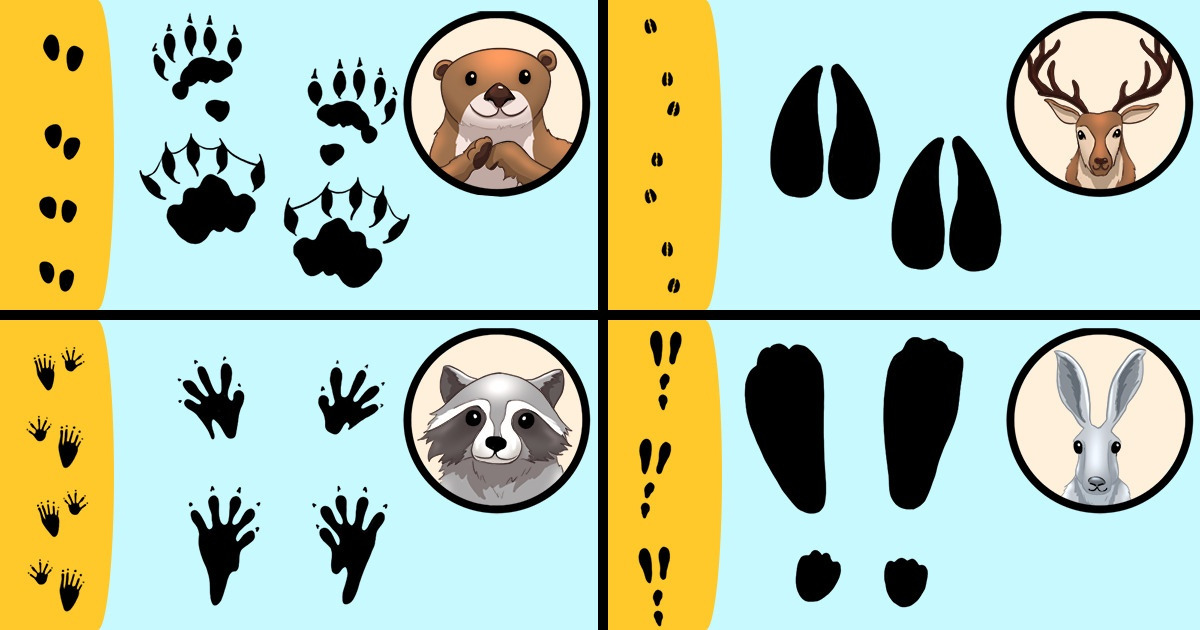
Tracking animals is a useful skill if you want to learn more about your environment and other creatures that live there. This is actually a very old discipline that humans have been using in order to hunt, learn more about animal behavior, and be aware of possible dangers in their surroundings.
5-Minute Crafts made a list of steps that you can use to track down animals.
1. Prepare for tracking.
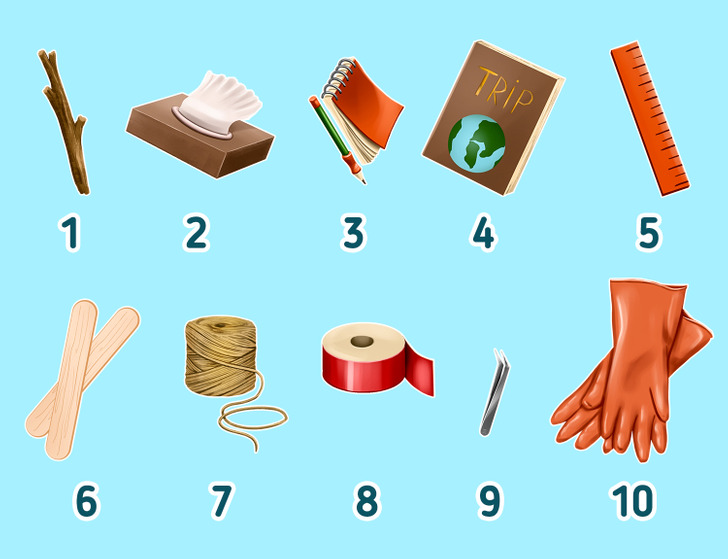
Prepare some things before you set out to track the animals.
- Use a stick: It can help you to focus on the trail, you can also make a mark next to the animal print to know that it was the last track you looked at (if you are circling), or you can use a stick to examine the scat.
- Bring biodegradable tissues: You can use a piece of tissue to mark the place where you already looked at the tracks.
- A notebook and a pencil: to note your findings.
- A tracking or a field guide: You can compare the information you have with the data in the guide to learn what animal you are tracking.
- A ruler: You will need it to measure the animal’s footprint.
- Popsicles, strings, and duct tape: This will help you to find out where the animal is going.
- Tweezers and latex gloves (optional): You can use them while examining the scat.
Note: It is ideal to look for animal tracks in the early morning or in the evening. When the sun is out, it’s harder to notice the tracks, so it’s best to look for them when the light is dimmer. Also, animals are usually resting during the day and they are more active during the sunrise or the sunset period.
2. Find evidence of an animal.
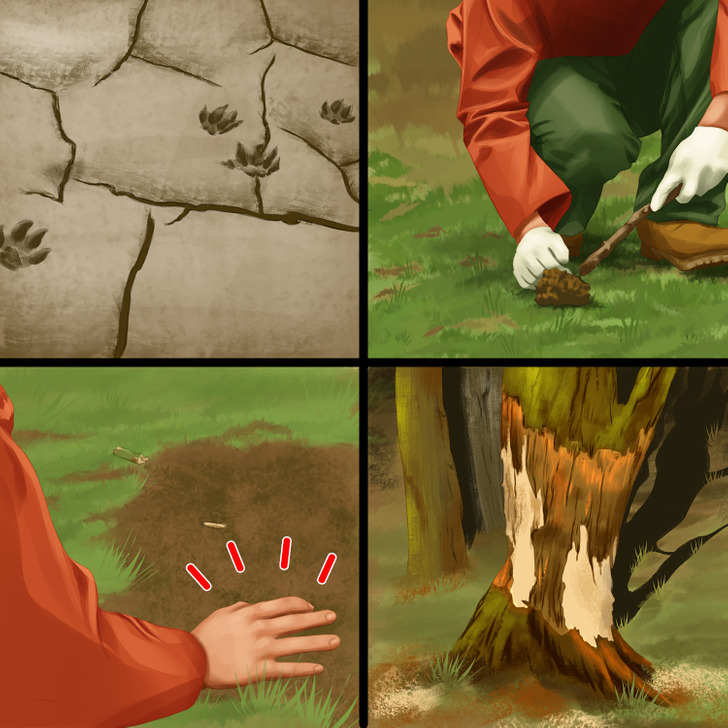
As the animals are moving, they leave evidence behind. Look for the following.
- Footprints: By examining the footprints, you can learn where was the animal going, why was it there, whether it was hunting or just passing by, when they were there, etc.
- Droppings (scat): This can tell you what animal has left it there and when. Be sure to wear hygienic gloves and use sticks or tweezers when examining scat. Remember that animals leave scat in the area where they feel safe and often near the nest or a den where they live.
- Ground disturbance: Finding stretches or some other marks (like checking if the ground is warm) can also help you reconstruct the animal’s movement and actions.
- Signs of rubbing, gnawing, or chewing: You can learn a lot about the animal’s behavior if you look for these signs. For example, male deer often rub their antlers against the trees during the mating period.
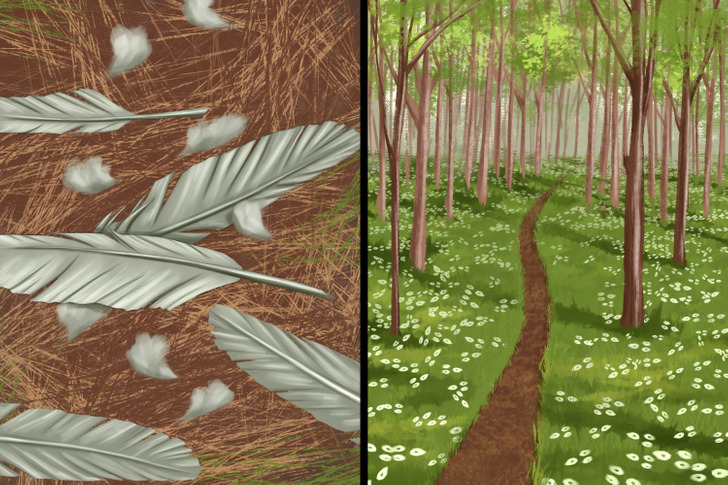
- Pulled out hair or feathers: This can indicate that the animals were fighting and there is maybe a kill site nearby.
- Travel routes include trails, runs, and escape routes. Trails are frequently used by many species of animals and runs are a bit more specific because they are usually used by a particular animal. You can recognize the escape route because they are generally used once and you can see the crashes on the ground.
3. Examine the footprints of the animal.
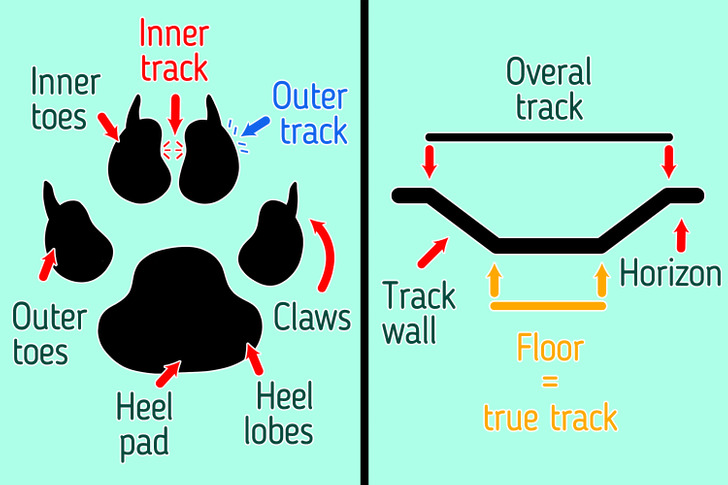
When you find the footprint, notice how many toes are on each foot, look at the claw markings, shape, and size of the print. The track is made when the heel slides into the ground, makes some pressure and pulls it out. No track will ever make a straight down pressure — it will always have an angled component, whether the foot was entering or leaving.
Tracking footprints is important because it can give you the answers to what this particular animal was doing here, whether it was looking for food or just passing by, when it was there, and where this animal is headed. With all of these pieces of information, you can reconstruct the whole chain of events, learn more about the animal, and develop a strategy of tracking.
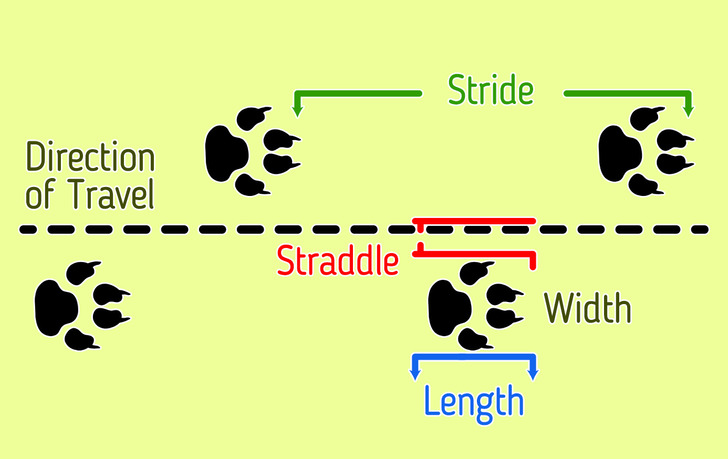
Many people do not read the true track of the print. When the foot presses into the soil, it makes a flat part in it. The length and width of the flat part represent the true track. It is important to know what the true track is and how to measure it because in that way, you will be able to distinguish to which animal the print belongs. If you are reading only the overall track (the horizon cuts), you won’t be able to determine which animal made it because some look very similar.
How to measure the track:
- Examine all 4 tracks: Find the length and width of all the 4 tracks that the animal made.
- Measure from toe to toe: Animals step first with their toes, so the length readings between tracks are measured from toe to toe.
- Calculate the stride: Find the distance from the heel on one side to the next heel on that side.
- Find the straddle: Examine the distance between the inside edge of each print, left to right.
4. Understand the track pattern.
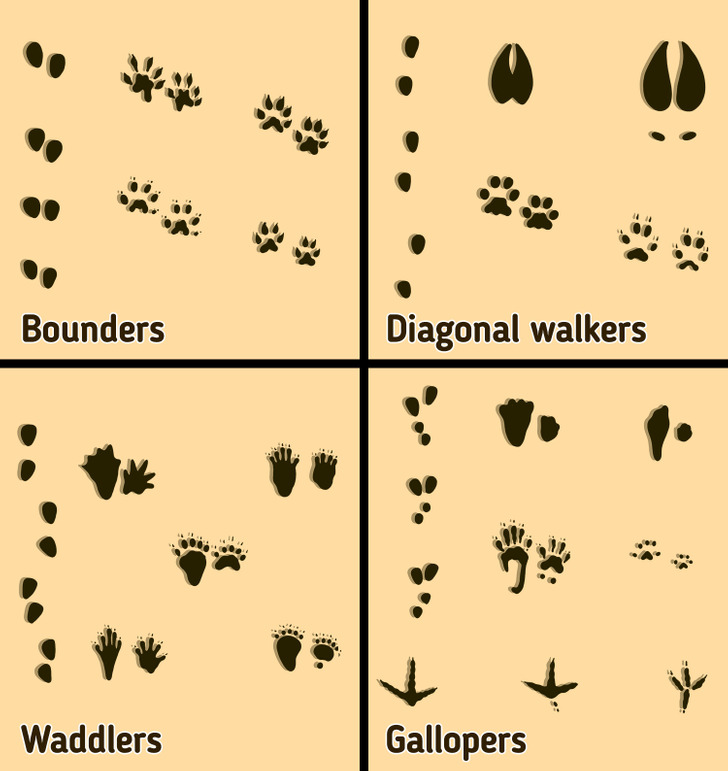
There are 4 main track patterns that will help you to identify the animal that made the print:
- Bounders: The legs on one side of the animal move together, followed by the 2 legs on the other side (e.g. animals from the weasel family, except skunks and badgers).
- Diagonal walkers: The opposite sides of these animals move at the same time (e.g. deer, moose, foxes, wolves, coyotes, bobcats, and dogs).
- Waddlers: They seem to waddle along with their wide bodies shifting from side to side. The legs on one side of the animal tend to move together (e.g. raccoons, skunks, beavers, and opossums).
- Gallopers: The front feet step first and the rear feet come around the outside and move where the front feet landed (these include small animals, like mice, chipmunks, squirrels, and larger animals, like rabbits and hares).
5. Find out where the animal is going.
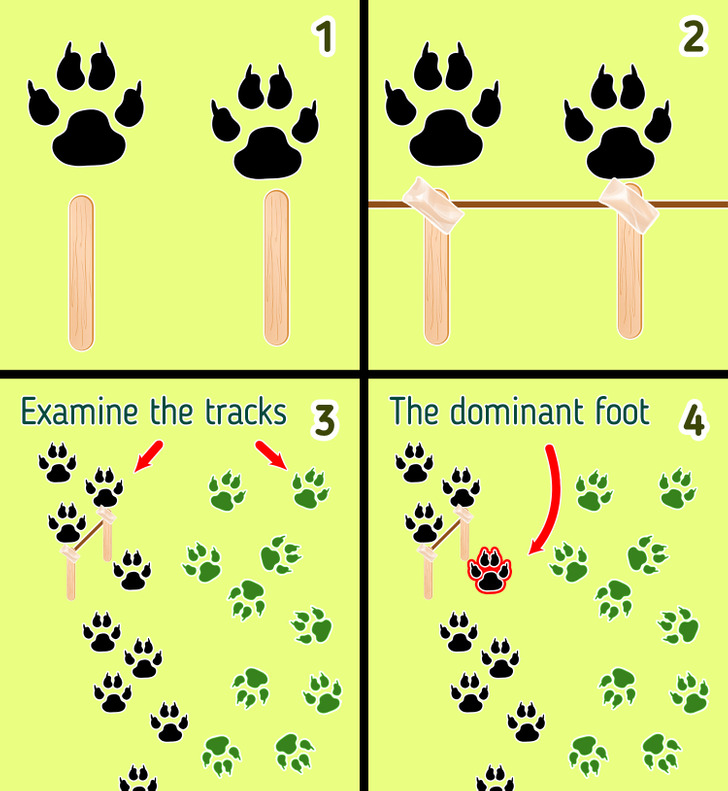
You can determine the line of the animal’s travel with popsicle sticks. You can do it by eye too, but sometimes the tracks are not clear enough, so you can use this trick:
- Place popsicle sticks at the heels of the animal’s tracks.
- Tape a string between the popsicles.
- Check if one front foot is behind the other 4 tracks.
- The dominant side makes more of a short, punch step, while the non-dominant gives a longer step. The foot that is lagging is dominant, which can tell you that the animal often circles in that direction.
Note: Now that you examined the footprints and you know the direction the animal is moving in, you can look for some other evidence, like what was mentioned in point number 2. When you find more evidence, you will be able to determine if you are getting closer to the animal or not.